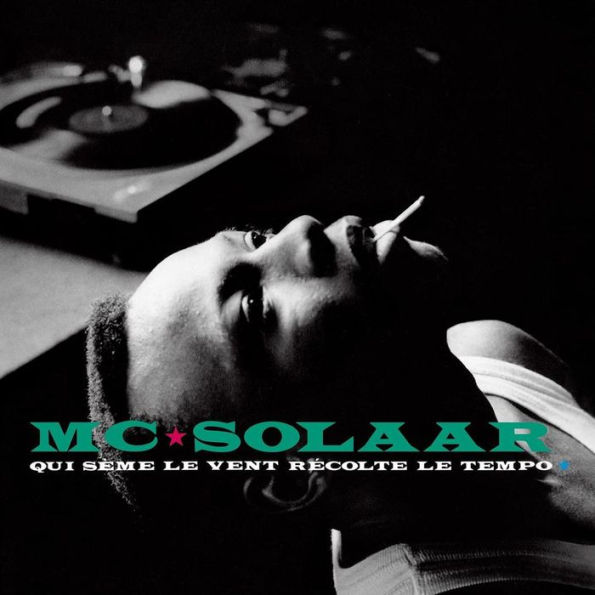The debut disc from
MC Solaar is a clear signal that quality
hip-hop can exist outside the U.S. and the English language barriers. Most of his lyrics read as "I'm the man" MC boasts and shout-outs to the Paris
hip-hop crew, but the French rapper has superb flow and a masterful producer in
Jimmy Jay, an absolute natural when it comes to creating sonic pastiches/collages to fit the lyrics. It's
French hip-hop and therefore a softer, gentler sound with the music more on the
acid jazz tip to match the rhythm and flavor of
Solaar's native tongue. The title track immediately alerts you to the difference -- the rapid but never rushed delivery works off the rhythms of active, chopping drums anchoring a full arrangement topped by organ fills and flavored by sax near the end.
Solaar is far from one-dimensional, adeptly adopting a conversational tone (
"Victime de la Mode" on a fashion victim theme), changing up vocal tempos (the low-key
"A Temps Partiel," a slick segue from the brief, jazzy-with-acoustic-bass
"Interlude"), and leaving more open spaces in the forceful
"Quartier Nord." He whispers the lost-love tale
"Caroline" while
Jimmy Jay enhances the melancholy mood with mournful strings and his customary attention to detail and dynamics (listen for the near-subliminal organ). The producer's like that, very smoooove but also deceptive in that there's always a lot going on in the arrangements underneath.
"Armand Est Mort" gets a laid-back feel from the sax solo, and a single, mood-creating piano chord echoes
"Inner City Blues" enough to make you wonder if that's a fragmentary sample of
Marvin Gaye's voice popping up there in the background. But the
funk front isn't neglected --
"L'Histoire de l'Art" has clavinet licks and horns over turntable scratches,
"Matiere Grasse Contre Matiere Grise" sports an early-'70s, JB-ish
funk backing with wah-wah guitar and upfront drums (and a lyrical day-in-the-life reflection on Paris and the world). And the '70s
funk groove for
"La Musique Adoucit les Mouers" works from a bass/drums spine with scratching and keyboard sounds while
"Bouge de La" goes off from direct drum drive and bass
funk before part two injects
skank organ and dubbed-out toasting. It makes for a good transition to the quasi-duel of motormouths on
"Ragga Jam," probably good for lighting up audiences live, but just lightweight here, and it brings the momentum to
Qui Seme le Vent Recolte le Tempo a halt. But it's an impressive debut and important historically -- by pairing a rapper and producer in perfect sync with one another, it gave early
French hip-hop a sound and tone of its own from the beginning. ~ Don Snowden


